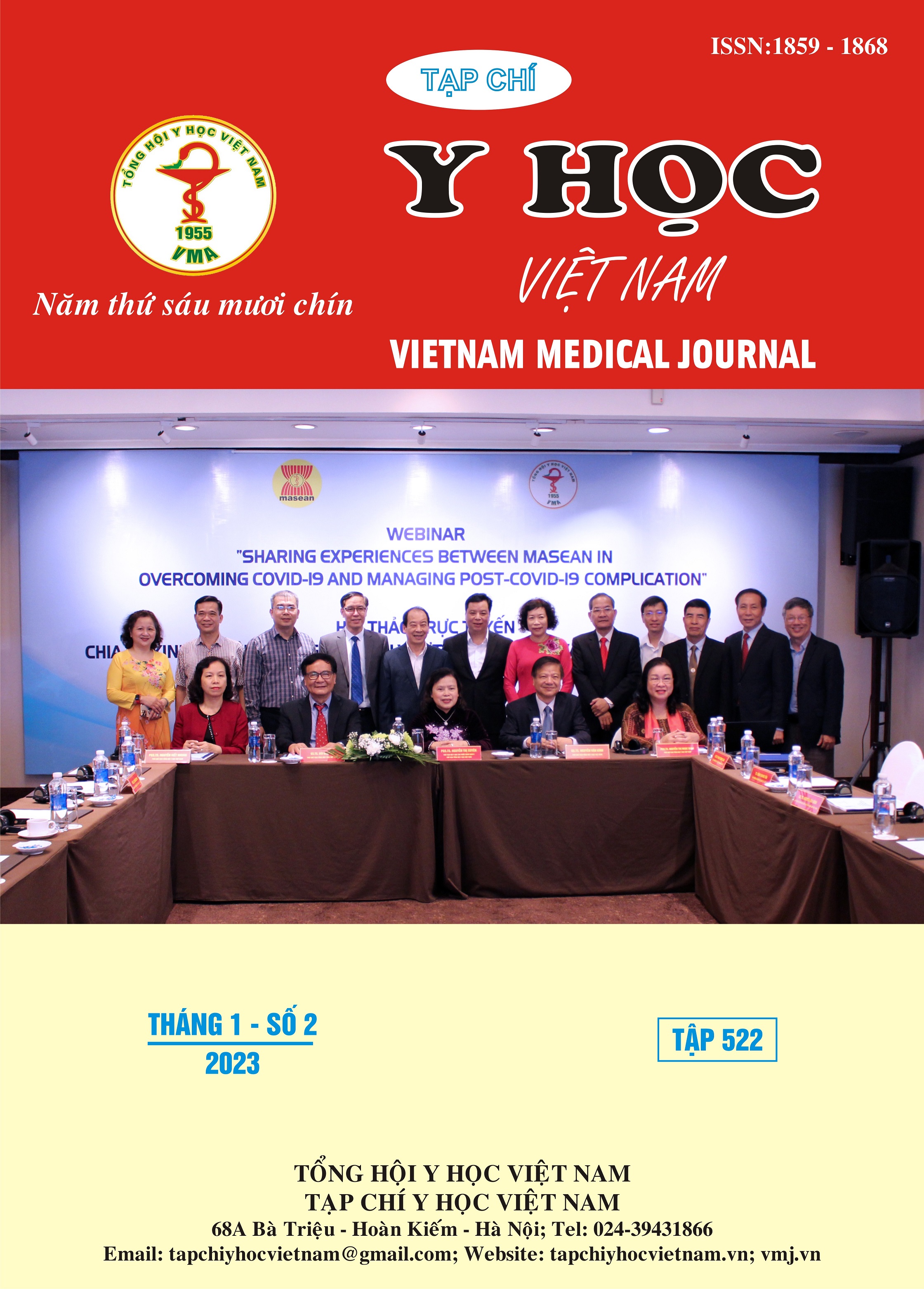EFFICACY OF RADIOFREQUENCY ABLATION TREATMENT IN CHRONIC GREAT SAPHENOUS VEIN INSUFFICIENCY AT NATIONAL GERIATRIC HOSPITAL
Main Article Content
Abstract
Objectives: The aim of the study was to assess the efficacy of radiofrequency ablation treatment in chronic great saphenous vein insufficiency. Subjects and Methods: an intervention study without a control group included of 50 patients (68 limbs) were diagnosed with chronic great saphenous vein insufficiency treated with radiofrequency ablation (RFA) and one-month and three – months follow-up. Results: evaluation after 1 month and 3 months of treatment showed the effectiveness and high success rate of RFA treatment. The clinically, 100% of functional symptoms improved (completely resolved or reduced severity of symptoms); clinical classification (C) in the CEAP classification, and venous clinical severity score (VCSS) were statistically significant. In terms of anatomy and hemodynamics, 100% of the treated veins were completely closed, and there was no flow in the vessel. There were no cases of failure. During and after treatment, there were only some mild side effects such as pain when needle puncture (98.5%), bruising on skin (44,1%), hyperpigmentation (4.4%). There were not severe complications after intervention. Conclusions: radiofrequency ablation treatment is a minimally invasive procedure, safe, highly effective, and should be widely used in the treatment of chronic great saphenous veins insufficiency.
Article Details
Keywords
Chronic venous insufficiency, radiofrequency ablation.
References
2. Evans CJ (1994). Epidemiology of varicose veins – a review. Int Angiol. 13:263-70.
3. Beebe-Dimmer JL (2005). The epidemiology of chronic venous insufficiency and varicose veins. Ann Epidemiol, 15:175-84
4. Gillet, J.-L., et al (2009). Side – effects and complication of foam sclerotherapy of the great and small saphenous veins: a controlled multicentrer prospective study including 1025 patients. Phlebology, 24(3), pp. 131-138.
5. Đặng Hanh Đệ, (2011). Suy tĩnh mạch mạn tính chi dưới. Bệnh lý mạch máu cơ bản. Tài liệu dịch, NXB Giáo dục Viêt Nam. Tr. 112-116.
6. Hồ Khánh Đức, Lê Hoàng Văn và cs (2018). Đánh giá kết quả sớm điều trị suy tĩnh mạch nông chi dưới bằng sóng cao tần. Tạp chí Y Hoc TP. Hồ Chí Minh, số 2, p. 527 – 532.
7. Lê Duy Thành, Nguyễn Thị Kiều Ly, Lương Hải Đăng (2016). Kết quả điều trị suy tĩnh mạch chi dưới bằng sóng cao tần tại Bệnh viện Trung ương Quân đội 108. Hội nghị tim mạch toàn quốc 2016
8. Alessandra Puggioni, Manju Kalra, Michele Carmo, et al (2005). Endovenous laser therapy and radiofrequency ablation of the great saphenous vein: analysis of early efficacy and complications. J Vasc Surg, vol. 42(3), p.488-493.
9. Jin HY, Ohe HJ, Hwang JK, et al (2017). Radiofriquency ablation of varicose veins improves venous clinical severity score despite failure of complete closure of the saphenous vein after 1 year. Asian J Surg, vol. 40(1), p. 48-54.
10. Casana R, Tolva VS, Odero A Jr, et al (2018). Three-year follow-up and quality of life of endovenous radiofrequency ablation of the great saphenous vein with the ClosureFast™ procedure: Influence of BMI and CEAP class. Vascular, vol. 26(5), p. 498-508.


